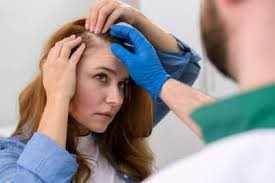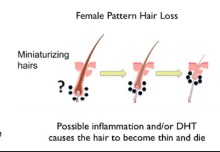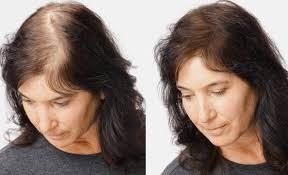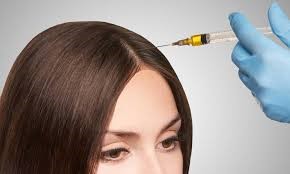Female Pattern Hair Loss: Unlocking the Secrets to Regrowth

Millions of women worldwide find themselves facing a frustrating reality – the gradual thinning of their hair. This condition, known as female pattern hair loss (FPHL), is also known as androgenetic alopecia. While hair loss can be distressing, understanding the causes, recognizing the symptoms, and exploring available treatments can help manage the condition effectively.

What is Female Pattern Hair Loss?

Female Pattern Hair Loss is a type of hair loss that occurs in a specific pattern, usually starting at the part line and gradually spreading across the crown of the scalp. Unlike male pattern baldness, which often results in complete baldness in certain areas, female pattern hair loss typically leads to a general thinning of the hair, particularly in the central part of the scalp.
Causes of Female Pattern Hair Loss
Genetics: Female Pattern Hair Loss is often hereditary. If your near woman ancestors experienced hair loss, you might be more likely to develop it too.
Hormonal Changes: Hormones play a significant role in hair growth and loss. Factors like pregnancy, menopause, and conditions like polycystic ovary syndrome (PCOS) can trigger or exacerbate female pattern hair loss.
Aging:As women age, hair naturally thins. This process can be accelerated by female pattern hair loss, leading to more noticeable hair loss.
Underlying Health Conditions: Thyroid disorders, iron deficiency, and autoimmune diseases can contribute to female pattern hair loss.
Medications: Certain medications, including those for hypertension, depression, and chemotherapy, can lead to hair loss.
Understanding Female Pattern Hair Loss
Female pattern hair loss, also referred to as androgenetic alopecia, is a genetic condition that causes gradual thinning of the hair, typically starting at the part line and spreading towards the front of the scalp. Unlike the more dramatic hair loss experienced by men, female pattern hair loss often presents as a diffuse thinning, making it more challenging to detect in its early stages.
Root cause of female pattern hair loss
The root cause of female pattern hair loss lies in the sensitivity of hair follicles to the hormone dihydrotestosterone (DHT), a byproduct of testosterone. As women age, the gradual increase in DHT levels can cause the hair follicles to shrink, leading to shorter, finer, and less pigmented hair strands. This cycle of miniaturization can eventually result in the complete disappearance of some follicles, leaving behind a visible thinning of the hair

Treatment Options for Female Pattern Hair Loss
Medications: Minoxidil (Rogaine): This is one of the most well-known medications for hair loss. It's available over the counter in liquid or foam form. Minoxidil is believed to work by increasing blood flow to the scalp and promoting hair follicle growth.

Medications: Certain medications, including those for hypertension, depression, and chemotherapy, can lead to hair loss.
Finasteride (Propecia): This medication is available in pill form and is used to treat male pattern baldness. It works by inhibiting the conversion of testosterone to dihydrotestosterone (DHT), which is thought to be a key factor in hair loss.

Low-Level Laser Therapy (LLLT):
A laser helmet or cap is lined from inside with low-level laser technology that stimulates dormant hair follicles to promote regrowth. The light works to target regions of the scalp experiencing balding and activates nutrients and oxygen to grow healthy, thick hair again. This FDA-approved treatment is noninvasive and easy to use. Just place the cap on your head and wear it for 20-30 minutes every other day.

Hair restoration Surgery
A hair restoration is a surgical procedure designed to treat hair loss or baldness. It involves extracting hair follicles from a specific donor area, typically the back or sides of your scalp, before implanting them into any areas of the scalp where there is balding or thinning. The restorationed hair follicles then continue to grow in this new location. A good hair restoration can be a life-changing experience for individuals with hair loss and baldness

Embracing the Power of Platelet-Rich Plasma (PRP)
PRP is a cutting-edge treatment that harnesses the natural healing and regenerative properties of the body’s own platelets to stimulate new hair growth and revitalize existing follicles
The process begins with a simple blood draw, during which a small amount of the patient’s blood is collected. This blood is then spun in a centrifuge, separating the platelets from the other blood components. The concentrated platelet-rich plasma is then carefully injected back into the scalp, targeting the areas of thinning or hair loss.

The magic of PRP lies in the growth factors and proteins contained within the platelets. These potent substances work to nourish and rejuvenate the hair follicles, promoting the activation of dormant follicles and stimulating the growth of new, healthy hair strands. By harnessing the body’s own natural healing abilities, PRP Hair treatment offers a safe and effective solution for women struggling with female pattern hair loss.

By embracing these transformative treatments, women can reclaim their hair, and their self-confidence, paving the way for a future where female pattern hair loss is no longer a source of frustration, but a challenge that can be overcome. To learn more about our hair restoration treatments- book your free consultation with our hair loss experts at DNCC.